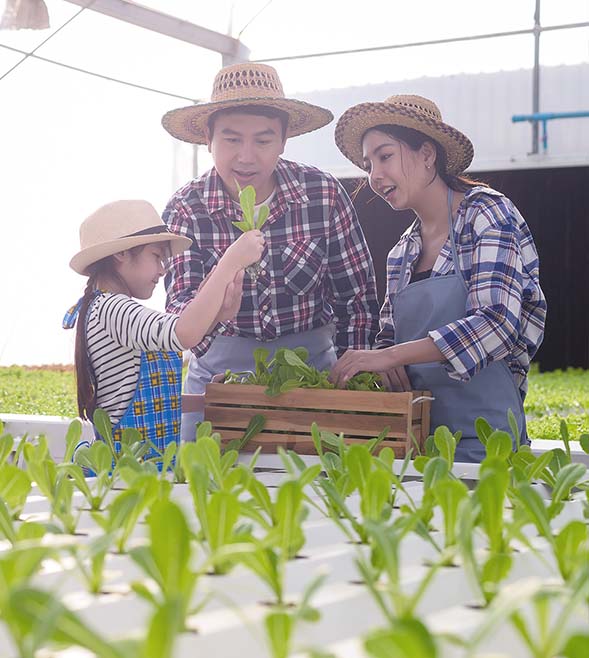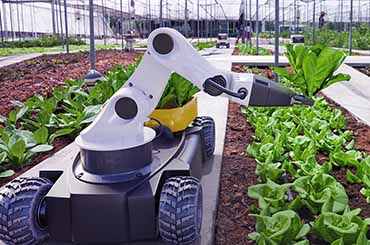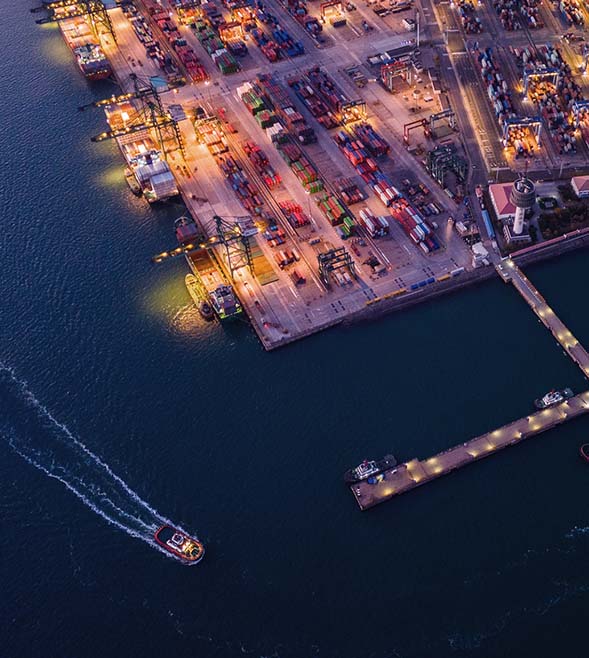- Market services
-
Compliance audits & reviews
Our audit team undertakes the complete range of audits required of Australian accounting laws to help you to help you meet obligations or fulfil best practice procedures.
-
Audit quality
We are fiercely dedicated to quality, use proven and globally tested audit methodologies, and invest in technology and innovation.
-
Financial reporting advisory
Our financial reporting advisory team helps you understand changes in accounting standards, develop strategies and communicate with your stakeholders.
-
Audit advisory
Grant Thornton’s audit advisory team works alongside our clients, providing a full range of reviews and audits required of your business.
-
Digital assurance
We capture actionable, quality insights from data within your financial reporting and auditing processes.

-
Corporate tax & advisory
We provide comprehensive corporate tax and advisory service across the full spectrum of the corporate tax process.
-
Private business tax & advisory
We work with private businesses and their leaders on all their business tax and advisory needs.
-
Tax compliance
We work alongside clients to manage all tax compliance needs and identify potential compliance or tax risk issues.
-
Employment tax
We help clients understand and address their employment tax obligations to ensure compliance and optimal tax positioning for their business and employees.
-
International tax
We understand what it means to manage tax issues across multiple jurisdictions, and create effective strategies to address complex challenges.
-
GST, stamp duty & indirect tax
Our deep technical knowledge and practical experience means we can help you manage and minimise the impact of GST and indirect tax, like stamp duty.
-
Tax law
Our team – which includes tax lawyers – helps you understand and implement regulatory requirements for your business.
-
Innovation Incentives
Our national team has extensive experience navigating all aspects of the government grants and research and development tax incentives.
-
Transfer pricing
Transfer pricing is one of the most challenging tax issues. We help clients with all their transfer pricing requirements.
-
Tax digital consulting
We analyse high-volume and unstructured data from multiple sources from our clients to give them actionable insights for complex business problems.
-
Corporate simplification
We provide corporate simplification and managed wind-down advice to help streamline and further improve your business.
-
Superannuation and SMSF
Increasingly, Australians are seeing the benefits, advantages and flexibility of taking control of their own superannuation and retirement planning.

-
Payroll consulting & Award compliance
Many organisations are grappling with a myriad of employee agreements and obligations, resulting in a wide variety of payments to their people.
-
Cyber resilience
The spectrum of cyber risks and threats is now so significant that simply addressing cybersecurity on its own isn’t enough.
-
Internal audit
We provide independent oversight and review of your organisation's control environments to manage key risks, inform good decision-making and improve performance.
-
Financial crime
Our team helps clients navigate and meet their obligations to mitigate crime as well as develop and implement their risk management strategies.
-
Consumer Data Right
Consumer Data Right (CDR) aims to provide Australians with more control over how their data is used and disclosed.
-
Risk management
We enable our clients to achieve their strategic objectives, fulfil their purpose and live their values supported by effective and appropriate risk management.
-
Controls assurance
In Australia, as with other developed economies, regulatory and market expectations regarding corporate transparency continue to increase.
-
Governance
Through fit for purpose governance we enable our clients to make the appropriate decisions on a timely basis.
-
Regulatory compliance
We enable our clients to navigate and meet their regulatory and compliance obligations.

-
Forensic accounting and dispute advisory
Our team advises at all stages of a litigation dispute, taking an independent view while gathering and reviewing evidence and contributing to expert reports.
-
Investigations
Our licensed forensic investigators with domestic and international experience deliver high quality results in the jurisdictions in which you operate.
-
Asset tracing investigations
Our team of specialist forensic accountants and investigators have extensive experience in tracing assets and the flow of funds.

-
Mergers and acquisitions
Our mergers and acquisitions specialists guide you through the whole process to get the deal done and lay the groundwork for long-term success.
-
Acquisition search & strategy
We help clients identify, finance, perform due diligence and execute acquisitions to maximise the growth opportunities of your business.
-
Selling a business
Our M&A team works with clients to achieve a full or partial sale of their business, to ensure achievement of strategic ambitions and optimal outcomes for stakeholders.
-
Operational deal services
Our operational deal services team helps to ensure the greatest possible outcome and value is gained through post merger integration or post acquisition integration.
-
Transaction advisory
Our transaction advisory services support our clients to make informed investment decisions through robust financial due diligence.
-
ESG Due Diligence
Our ESG due diligence process evaluates a company's environmental, social, and governance factors during the pre-investment phase to determine the overall maturity of the entity, manage potential risks, and identify opportunities.
-
Business valuations
We use our expertise and unique and in-depth methodology to undertake business valuations to help clients meet strategic goals.
-
Tax in mergers & acquisition
We provide expert advice for all M&A taxation aspects to ensure you meet all obligations and are optimally positioned.

-
Corporate finance
We provide effective and strategic corporate finance services across all stages of investments and transactions so clients can better manage costs and maximise returns.
-
Debt advisory
We work closely with clients and lenders to provide holistic debt advisory services so you can raise or manage existing debt to meet your strategic goals.
-
Working capital optimisation
Our proven methodology identifies opportunities to improve your processes and optimise working capital, and we work with to implement changes and monitor their effectiveness.
-
Capital markets
Our team has significant experience in capital markets and helps across every phase of the IPO process.
-
Debt and project finance raising
Backed by our experience accessing full range of available funding types, we work with clients to develop and implement capital raising strategies.
-
Private equity
We provide advice in accessing private equity capital.
-
Financial modelling
Our financial modelling advisory team provides strategic, economic, financial and valuation advice for project types and sizes.
-
Payments advisory
We provide merchants-focused payments advice on all aspects of payment processes and technologies.

-
Voluntary administration & DOCA
We help businesses considering or in voluntary administration to achieve best possible outcomes.
-
Corporate insolvency & liquidation
We help clients facing corporate insolvency to undertake the liquidation process to achieve a fair and orderly company wind up.
-
Complex and international insolvency
As corporate finance specialists, Grant Thornton can help you with raising equity, listings, corporate structuring and compliance.
-
Safe Harbour advisory
Our Safe Harbour Advisory helps directors address requirements for Safe Harbour protection and business turnaround.
-
Bankruptcy and personal insolvency
We help clients make informed choices around bankruptcy and personal insolvency to ensure the best personal and stakeholder outcome.
-
Creditor advisory services
Our credit advisory services team works provides clients with credit management assistance and credit advice to recapture otherwise lost value.
-
Small business restructuring process
We provide expert advice and guidance for businesses that may need to enter or are currently in small business restructuring process.
-
Asset tracing investigations
Our team of specialist forensic accountants and investigators have extensive experience in tracing assets and the flow of funds.

-
Independent business reviews
Does your company need a health check? Grant Thornton’s expert team can help you get to the heart of your issues to drive sustainable growth.
-
Commercial performance
We help clients improve commercial performance, profitability and address challenges after internal or external triggers require a major business model shift.
-
Safe Harbour advisory
Our Safe Harbour advisory helps directors address requirements for Safe Harbour protection and business turnaround.
-
Corporate simplification
We provide corporate simplification and managed wind-down advice to help streamline and further improve your business.
-
Director advisory services
We provide strategic director advisory services in times of business distress to help directors navigate issues and protect their company and themselves from liability.
-
Debt advisory
We work closely with clients and lenders to provide holistic debt advisory services so you can raise or manage existing debt to meet your strategic goals.

-
Business planning & strategy
Our clients can access business planning and strategy advice through our value add business strategy sessions.
-
Private business company secretarial services
We provide company secretarial services and expert advice for private businesses on all company secretarial matters.
-
Outsourced accounting services
We act as a third-party partner to international businesses looking to invest in Australia on your day-to-day finance and accounting needs.
-
Superannuation and SMSF
We provide SMSF advisory services across all aspects of superannuation and associated tax laws to help you protect and grow your wealth.
-
Management reporting
We help you build comprehensive management reporting so that you have key insights as your business grows and changes.
-
Financial reporting
We help with all financial reporting needs, including set up, scaling up, spotting issues and improving efficiency.
-
Forecasting & budgeting
We help you build and maintain a business forecasting and budgeting model for ongoing insights about your business.
-
ATO audit support
Our team of experts provide ATO audit support across the whole process to ensure ATO requirements are met.
-
Family business consulting
Our family business consulting team works with family businesses on running their businesses for continued future success.
-
Private business taxation and structuring
We help private business leaders efficiently structure their organisation for optimal operation and tax compliance.
-
Outsourced CFO services
Our outsourced CFO services provide a full suite of CFO, tax and finance services and advice to help clients manage risk, optimise operations and grow.
-
ESG, sustainability and climate reporting
There is a growing demand for organisations to provide transparency on their commitment to sustainability and disclosure of the nonfinancial impacts of their business activities. Commonly, the responsibility for sustainability and ESG reporting is landing with CFOs and finance teams, requiring a reassessment of a range of reporting processes and controls.
-
ESG, sustainability and climate advisory
With the ESG and sustainability landscape continuing to evolve, we are focussed on helping your business to understand what ESG and sustainability represents and the opportunities and challenges it can provide.
-
ESG, sustainability and climate reporting assurance
As the demand for organisations to prepare information in relation to ESG & sustainability continues to increase, through changes in regulatory requirements or stakeholder expectations, there is a growing need for assurance over the information prepared.
-
ESG and sustainability due diligence
As environmental, social, and governance (ESG) considerations become increasingly pivotal for dealmakers in Australia, it is important for investors to feel confident in assessing transactions through an ESG lens.

-
Management consulting
Our management consulting services team helps you to plan and implement the right strategy to deliver sustainable growth.
-
Financial consulting
We provide financial consulting services to keep your business running so you focus on your clients and reaching strategic goals.

-
China practice
The investment opportunities between Australia and China are well established yet, in recent years, have also diversified.
-
Japan practice
The trading partnership between Japan and Australia is long-standing and increasingly important to both countries’ economies.
-
India practice
It’s an exciting time for Indian and Australian businesses looking to each jurisdiction as part of their growth ambitions.
-
Singapore practice
Our Singapore Practice works alongside Singaporean companies to achieve growth through investment and market expansion into Australia.
-
Vietnam practice
Investment and business opportunities in Vietnam are expanding rapidly, driven by new markets, diverse industries, and Vietnam's growing role in export manufacturing, foreign investment, and strong domestic demand.

-
 Client Alert Wine not? Primary production land tax exemption no longer on the vineFor wine producers and vineyard owners, the recent New South Wales Civil and Administrative Tribunal decision in Zonadi Holdings Pty Ltd ATF Wombat Investment Trust v Chief Commissioner of State Revenue [2025] NSWCATAD 84 may spell trouble for their current primary production land tax exemptions.
Client Alert Wine not? Primary production land tax exemption no longer on the vineFor wine producers and vineyard owners, the recent New South Wales Civil and Administrative Tribunal decision in Zonadi Holdings Pty Ltd ATF Wombat Investment Trust v Chief Commissioner of State Revenue [2025] NSWCATAD 84 may spell trouble for their current primary production land tax exemptions. -
 Client Alert Unlock 2025: government grants updateIf government grants are part of your 2025 strategy, take note of the available quarter one funding opportunities. With increasing inflationary pressures, government grants can be an essential alternative funding source for businesses with critical investment projects.
Client Alert Unlock 2025: government grants updateIf government grants are part of your 2025 strategy, take note of the available quarter one funding opportunities. With increasing inflationary pressures, government grants can be an essential alternative funding source for businesses with critical investment projects. -
 Report Agribusiness, Food & Beverage Dealtracker 2024Merger & Acquisition (M&A) and equity market activity in the Agribusiness, Food & Beverage (Ag, F&B) sector is undergoing a strategic shift, as investors have become more selective and increasingly cautious in response to global economic uncertainty.
Report Agribusiness, Food & Beverage Dealtracker 2024Merger & Acquisition (M&A) and equity market activity in the Agribusiness, Food & Beverage (Ag, F&B) sector is undergoing a strategic shift, as investors have become more selective and increasingly cautious in response to global economic uncertainty. -
 Client Alert Government Grants in FY25As we embark on a new financial year, it’s crucial to take a strategic approach to understanding the government grants landscape.
Client Alert Government Grants in FY25As we embark on a new financial year, it’s crucial to take a strategic approach to understanding the government grants landscape.
-
Renewable Energy
Transformation through energy transition

-
Flexibility & benefits
The compelling client experience we’re passionate about creating at Grant Thornton can only be achieved through our people. We’ll encourage you to influence how, when and where you work, and take control of your time.
-
Your career development
At Grant Thornton, we strive to create a culture of continuous learning and growth. Throughout every stage of your career, you’ll to be encouraged and supported to seize opportunities and reach your full potential.
-
Diversity & inclusion
To be able to reach your remarkable, we understand that you need to feel connected and respected as your authentic self – so we listen and strive for deeper understanding of what belonging means.
-
In the community
We’re passionate about making a difference in our communities. Through our sustainability and community engagement initiatives, we aim to contribute to society by creating lasting benefits that empower others to thrive.
-
Graduate opportunities
As a new graduate, we aim to provide you more than just your ‘traditional’ graduate program; instead we kick start your career as an Associate and support you to turn theory into practice.
-
Vacation program
Our vacation experience program will give you the opportunity to begin your career well before you finish your degree.
-
The application process
Applying is simple! Find out more about each stage of the recruitment process here.
-
FAQs
Got questions about applying? Explore frequently asked questions about our early careers programs.
-
Our services lines
Learn about our services at Grant Thornton
-
Current opportunities
Current opportunities
-
Remarkable people
Our team members share their remarkable career journeys and experiences of working at Grant Thornton.
-
Working at Grant Thornton
Explore our culture, benefits and ways we support you in your career.
-
Current opportunities
Positions available.
-
Contact us
Get in touch
Navigating the complexities of the grants landscape can be overwhelming, and distracting from your core business, so leave it with us so you can focus on what you do best.
Navigating headwinds
With several elections on the horizon, both at the state and federal levels, at minimum we will see grant programs stall in line with caretaker periods. Should there be a change in government, the period of disruption may extend. This is a real possibility in the Queensland grants jurisdiction.
Broader economic volatility and contraction are already impacting, and will continue to impact, the availability of grants and how the government chooses to support industry (think equity and debt investment or production tax rebates over traditional non-dilutive grant funding).
Impact of political cycles
Upcoming elections in key states such as Queensland, scheduled for October 2024, and Western Australia, scheduled for March 2025, will impact the availability of grant funding at the state level. This is especially significant in FY25 as both Queensland and Western Australia are states with healthy budget positions, having generally strong and broad grant regimes.
These elections, coupled with a clear, but highly targeted industry support strategy from the federal government (clean energy transition) will continue to shape the availability and focus of grant programs.
The federal election, expected by May 2025, will pause grant programs at this level. This will impact already highly subscribed, multi-stage programs, like the Industry Growth Program (noting that the grant stream of the Industry Growth Program only opened in May 2024).
The net effect of this will be continued increase in competition in the grant funding space, exacerbated by pent-up demand from industry, likely resulting in longer application assessment times and perhaps temporary program closures as we have seen in Queensland (Industry Partnership Program), and more recently in Western Australia (WA Investment Attraction Fund).
Of course there is also the US election in November, and it remains to be seen what impact a Trump victory could have on the Future Made in Australia plans, part of which hinge on exporting Australian value-added critical mineral to allies such as the United States.
Economic climate and impact
The current economic climate, characterised by an inflationary environment and post-COVID budget deficits, has prompted some state governments, such as Victoria, to scale back legacy industry support programs. While New South Wales has reopened grants following the 2023 change of government, the state no longer has the breadth of programs it once did. Assessment times on its new Net Zero Manufacturing Initiative program were well over those publicised in the guidelines, and those moving from Expression of Interest to Detailed Application stage will agree – things are moving suspiciously slowly.
The impact of reduced state budgets is particularly evident in the “traditional” manufacturing grant space, where funding has been significantly curtailed. The focus on immediate economic relief measures means limited budget allocations to grant funding, again making the landscape more competitive and challenging for businesses seeking funding – particularly SME manufactures operating outside the National Reconstruction Fund priority industry sectors.
Opportunities amidst challenges
Despite these challenges, governments at all levels continue to seek similar benefits from grant supported projects, with funding supporting capital expenditure, high-skilled job creation, skills investment, positive economic outcomes and of course clean energy market development. A notable trend is the increasing emphasis on environmental and ESG impacts – with the ‘S’ of ESG also growing in focus. Take the Federal Government’s new Future Made in Australia Community Investment Principles as an example of this shift.
How Can Grant Thornton Help?
At Grant Thornton, we support small, mid-sized, and large businesses with comprehensive government grant assistance. We help you identify, plan for, and apply to grant programs that align with your business growth strategy. If you are an innovative business with upcoming investment projects, there are likely grant opportunities available for you, especially if you operate in priority sectors such as agriculture, defence, energy, food & beverage, health, medtech and life sciences, mining, renewables and low emissions technologies, resources and critical minerals, or space. We can design a dedicated grant strategy to help you stay competitive and grow!
Read on for more key government grant programs to watch in FY25.
With a clear focus on the Future Made in Australia mission, grant programs will focus on priority industry sectors, namely:
- Net Zero Transformation: Renewable Hydrogen, Green Metals, and Low Carbon Liquid Fuels.
- Economic Resilience and Security: Critical Minerals Processing and Refining, and Manufacturing Clean Energy Technologies.
Other industry sectors identified for the National Reconstruction Fund include: value-add in resources; value-add in agriculture, forestry and fisheries; transport; medical science; renewables and low emission technologies; defence and enabling capabilities.
Key grant and investment programs to look out for:
- Australian Renewable Energy Agency (ARENA) grant programs, which include:
- Grant programs to support core investments in renewable and clean energy technologies, including continuation of the Hydrogen Headstart program (open).
- New Future Made in Australia Innovation Fund, supporting innovation, commercialisation, pilot and demonstration projects and early stage development in priority sectors (pending).
- New Solar Sunshot program, supporting the development of solar manufacturing capabilities. Likely production incentive, rather than capex grant (pending).
- New Battery Breakthrough Initiative, supporting the development of battery manufacturing capabilities. Likely production incentive, rather than capex grant (pending).
- the Solar Scaleup Challenge, a collaborative challenge administered by Greenhouse and ARENA, to support breakthrough solar PV innovations.
- Industry Growth Program, supporting small and medium-sized businesses with commercialise or grow innovative new products, services and processes. Advisory services, before recommendation into the grant program, which could offer up to $5m in grant funding (open, highly subscribed).
- National Reconstruction Fund, supporting large-scale advanced manufacturing in key priority sectors, offering loans, equity investment and guarantees (no grants).
- Critical Minerals Facility and Northern Australia Infrastructure Facility, supporting strategic critical minerals investments through debt/equity arrangements (no grants).
- Defence Industry Development Grants Program, supporting small and medium-sized enterprises to access grants to build Australia’s sovereign capability, global competitiveness, technical superiority and national security (open, assessed in rolling batches across the year).
- Thriving Suburbs Program, supporting not-for-profit organisations and local government agencies or bodies by providing funding to construct or upgrade community-focused infrastructure. Grants of $500,000 to $15 million available, covering 50% or more of eligible expenditure. The program will run for three years to FY27.
The R&D Tax Incentive program continues to help companies to innovate and grow, by offsetting their costs of eligible research and development (industry agnostic).
New hydrogen and critical minerals production tax incentive programs were also flagged in the 2024-25 Budget and are undergoing design (public consultation closed in July 2024).
Next election: The next election is due by September 2025, but expected by the end of May. Expect a pause on grant programs for at least 2-3 months on either side of the election period.
For the 2024-2025 year, Victoria has reprioritised budgetary allocations from grant programs to other initiatives. Government funding support for mid-sized businesses will likely be challenging, and businesses may need to consider other non-capex based funding options for their projects.
Key grant and investment programs to look out for:
- Funding through Breakthrough Victoria, who are investing in highly innovative companies and projects in advanced manufacturing, agri-food, clean economy, digital technologies, health and life sciences. Investment equity arrangements (no grants). The state budget reduced funding for Breakthrough Victoria by an average of $90 million a year over the next four years, and the fund’s investment profile extended from 10 to 15 years. This reduced funding will result in higher competition and stringent analysis of proposals.
- Funding through LaunchVic, continuing to support Victoria’s future innovators, creators and entrepreneurs. These could include grants and other accelerator-type program support.
- Funding to support workforce skills development through vocational training, free TAFE and other skills based training arrangements.
- Potential funding to support large-scale tourism and events projects.
- Discretionary funding to support meritorious projects on a case-by-case basis.
Next election: November 2026.
With a significant focus on cost of living and other committed funding in the recent 2024-2025 Budget, there are no notable new grant funding programs announced for the coming financial year.
Key grant and investment programs to look out for:
- Net Zero Manufacturing Initiative, the state’s flagship manufacturing program targeting the development of low emissions technologies. The first funding round has closed, with assessment of expressions of interests ongoing. No noted future funding rounds publicised.
- Innovation programs, such as the Minimum Viable Product (MVP) Ventures program, supporting startups and innovative SMEs to commercialise highly innovative and new products (open).
- Potential discretionary funding through Invest NSW, for projects of significance on a case-by-case basis. Particularly projects involving significant capital equipment investment, high skills jobs creation, and in a regional-based location.
Next election: March 2027.
Queensland has several interesting industry grant programs on offer. However, with the state election upcoming in October 2024, assessment of these programs may be delayed. If there is a change in government, there is uncertainty about timing of new grant programs.
Key grant and investment programs to look out for:
- Make it in Queensland, additional $25m to continue:
- Made in Queensland, additional $20m in Round 7 supporting small and medium sized manufacturers to increase international competitiveness, productivity and innovation via the adoption of new technologies, systems and processes, and to generate high-skilled jobs for the future (pending, likely August or September opening).
- Manufacturing Hubs Grant Program, additional $5m in Round 4 to assist regional small to medium sized manufacturers to become productive, build their advanced manufacturing capabilities and create the jobs of the future (pending).
- Regional Economic Futures Fund, a $200m program to support communities in seizing industry development opportunities presented by global decarbonization (open).
- Recycling and Jobs Fund, to support resource recovery infrastructure to increase resource recovery rates, facilitate organics recycling and progress the South-East Queensland region towards a circular economy (open).
- Quantum technologies grant funding programs to support the implementation of the Queensland Quantum and Advanced Technologies Strategy (closing July 2024).
- Critical Minerals and Battery Technology Fund, investing and supporting projects focused on critical minerals, battery technology and advanced materials manufacturing through grants and debt/equity investments (open).
Next election: October 2024. Expect a pause on grant programs for at least 2-3 months on either side of the election period.
With the next election upcoming in March 2025, Western Australia is strategically tightening up its grant funding programs and refocusing to other initiatives.
Key grant and investment programs to look out for:
- Investment Attraction Fund, supporting projects that encourage new investment in Western Australia that will create local jobs and contribute to a more diversified economy. While the New Energies Industry Funding stream has been paused due to oversubscription, there are continuing allocations in the 2024-2025 budget for this program (paused).
- Collie Industrial Transition Fund, supporting projects in green manufacturing or minerals processing; energy intensive industries and future clean energy industries (open).
- Clean Energy Future Fund, supporting innovative clean energy projects that offer significant, cost-effective reduction in emissions and significant community benefits (closed, two new rounds pending).
- Lower Carbon Grants, supporting large scale, transformational research and innovation activity that support practical and effective decarbonisation solutions (closed, monitor for new rounds)
- Other innovation grants (funding allocated for FY25) supporting the innovation ecosystem in Western Australia.
- Funding supporting skills development, including clean energy skills training opportunities at TAFE.
Next election: March 2025. Expect a pause on grant programs for at least 2-3 months on either side of the election period.
South Australia’s budget is in surplus for 2024-2025, and offers some grant programs that may be of interest, particularly for defence projects.
Key grant programs to look out for:
- Economic Recovery Fund: Round 2 will support small businesses and not for profit organisations to invest in energy efficient equipment or improvements, offering grants up to $50,000 (opening August 2024). Discretionary funding may also be available for projects that support high-skilled jobs creation, improve productivity, increase exports and support innovative, value-adding technologies in South Australia.
- Defence programs, including industry-research programs such as the Defence Activator Fund (open, closing 15 August 2024) , and the Collaborative Research Fund (open, closing 6 September 2024) supporting targeted defence projects and technologies.
- Net Zero Agriculture program, supporting innovation, on-farm solutions and upskilling of the agricultural sector to reduce emissions through low emission intensity farming systems.
- Tourism and business events programs
- Investment attraction programs, accessed through discretionary funding from the state’s investment department, for projects seeking to establish operations in South Australia and focused on economic growth and export uplift.
Next election: March 2026.
Connect with Simone Barker on LinkedIn to keep on top of the evolving grants landscape.
Tax Agents Disclosures
The Tax Practitioners Board maintains a register of tax agents and BAS agents. You can access and search this register here.
Your engagement letter with Grant Thornton and the Standard Terms and Conditions set out our procedures for dealing with problems or complaints. The Tax Practitioners Board also has a complaints process in relation to tax agent services as outlined on their website which can be accessed here.
Section 45 of the Tax Agent Services (Code of Professional Conduct) requires Grant Thornton to notify you if it becomes aware of any matter which could significantly influence your decision to engage us or to continue to engage us in relation to the provision of tax agent services. Grant Thornton is not aware of any such matters.























